Search Results
Fine Jewelry University Articles matching: “back stone”
Showing only FJU Article results. Click here to show all results.
Fine Jewelry University (Show All FJU Articles)
-
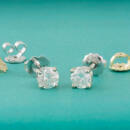
Styles of Earring Backs
Earrings come in many different styles. Here we will explore the more common types of earring backs, highlighting some of the pros and cons of each. Maybe you have a style in mind and don’t know the proper name for … you are simply interested in expanding your general jewelry knowledge. Keep reading; we have your answers. Friction Backs (Butterfly Backs) Also called “butterfly backs,” and sometimes “push backs.” These are undoubtedly the most common … posts, using friction to secure the earring in place–hence the name. Often times the post has a notch so that the back actually snaps into place. PROS Availability – These backs are the go-to for many jewelry wearers. Security – They …
-

How to Tell If a Diamond Is Natural or Lab Grown
… DiaTrue. They bombard a diamond with specific types of radiation (nothing harmful to humans) and analyze what the stone outputs. There are certain, tell-tale signs of the various processes used to make lab grown diamonds that show up as … of diamond material was built on the next. The end result is that we can ship a diamond to a GIA gem lab and get back a report telling us with certainty whether or not it is lab grown. Is My Diamond Lab Grown? So, should you be worried …
-
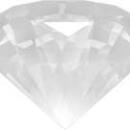
Fake Diamonds: The Great Diamond Attack
… the ability to identify Moissanite. More on Moissanite Moissanite also has some gemological properties (it is a DR stone while diamond is a SR stone) that help identify it, but labs are working to change the nature of the stone. It has a …them apart. Gemologists must use all their experience and training to find the smallest of clues to determine if the stone is of natural or manufactured origin. It can be done well with careful observation. Keep in mind, however, that the …
-

How to Sell Jewelry on Craigslist and Facebook Marketplace
…number in the ad, use your cell number and not a home phone number. That way, when someone calls you, you get a call back number, and they can’t find your home address. It is also a good idea to go with someone else. I have met people who…. Con-men are good at this and they use Craigslist very effectively. Know your jewelry. Recheck it when they hand it back. Don’t take risks just to make a little more on the sale of your estate jewelry. Trust your instincts. Keep diligent…
-
Understanding the Diamond Buying Game
…report to say. So the first problem you have to contend with is what lab graded the diamond and how they grade. Next, understanding a diamond report is not just seeing the four C’s grade to compare diamonds. The same lab can grade two stones H VS2 1.00 carat and the value of the two diamonds can be hundreds, if not thousands of dollars different. It is a favorite trick of some diamond wholesalers to use GIA labs for very poorly cut diamonds. The general public knows GIA …
-
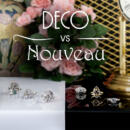
Art Deco vs. Art Nouveau Style Jewelry
… it impacted almost every artistic medium. Jewelry makers embraced materials such as enamel, horn, and semi-precious stones to create pieces that were not just adornments but works of art. Many Art Nouveau jewelry pieces were made in … quite common as well. The diamonds used in Art Nouveau jewelry were typically Old Mine cuts, but Old European cut stones were also included as they became more popular. In contrast, Art Deco arrived in the 1920’s and 1930’s, characterized…
-
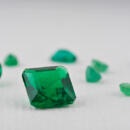
Gem in the Spotlight: Emerald
Springtime exudes life, full of bright colors and renewed energy. Emerald, May’s gemstone, captures this enthusiasm for life in rich elegance. This precious gemstone has been revered for over 4,000 years … quartz varieties. The refractive index of emerald ranges from 1.57 to 1.58, making it a moderately refractive gemstone. Its specific gravity ranges from 2.65 to 2.75. One of the distinctive features of emeralds is that they often contain … are referred to as jardin (the French word for garden) because they look like moss or a garden inside of the stone. These inclusions are tiny fissures, bubbles, or crystals that are visible to the naked eye. These inclusions are not …
-
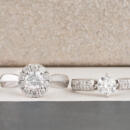
Anatomy of a Ring
… The gallery of a ring is a somewhat ambiguous term that refers to the underside of the ring beneath the center stone. There is often a design on the top part of the ring that is lifted up above the finger. In order to maintain the …next to each other. The constant friction with another ring can actually wear through the gallery leaving the center stone at risk of calling out. This is why we typically recommend that you have your rings soldered together if you plan to…
-
Frequently Asked Question about Jewelry
… the Diamond does not chip or is not otherwise altered. An appraisal can be performed on a loose Diamond, a mounted stone, or jewelry. If the stone is not loose, the physical properties are estimated using various estimation techniques. …. Carat is the weight of a gem. A carat equals 1/5 of one gram. Cut has two components to it. The shape of the stone and the way facets are positioned on the diamond. Color is actually looking for the absence of color or transparency. …